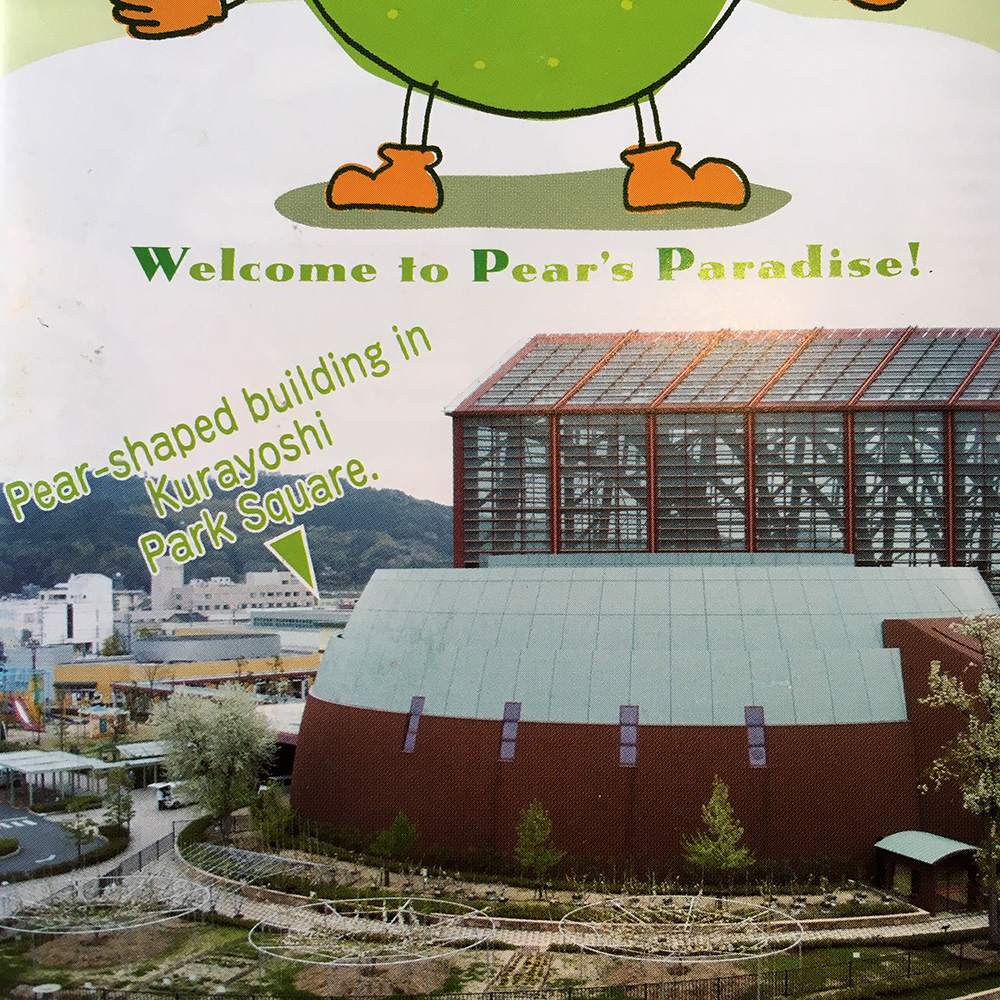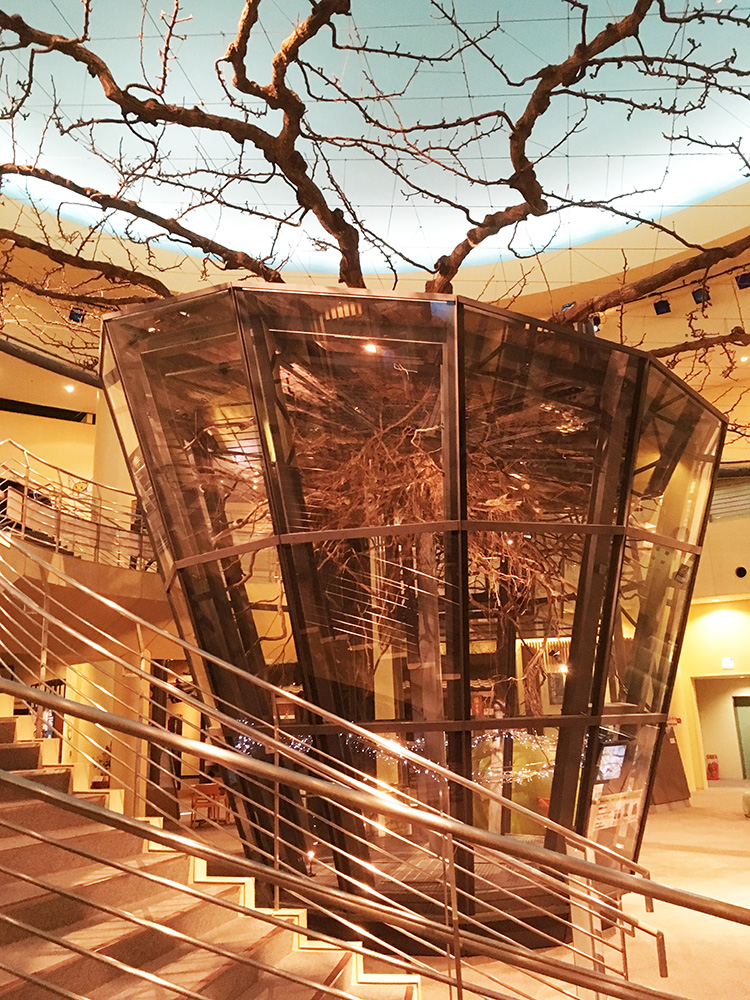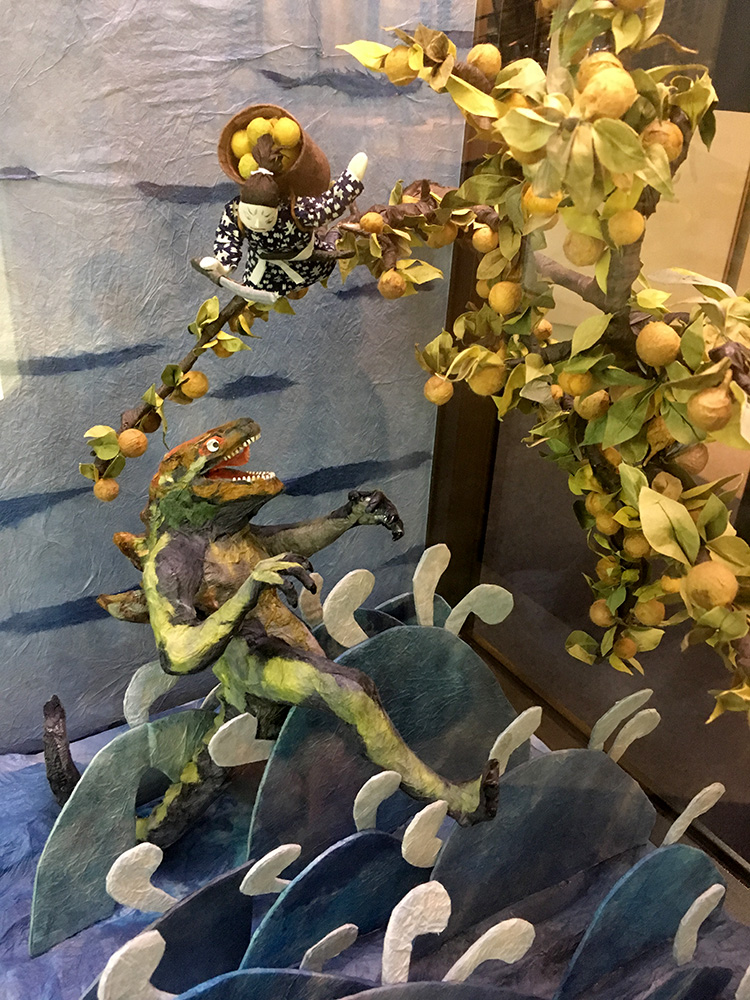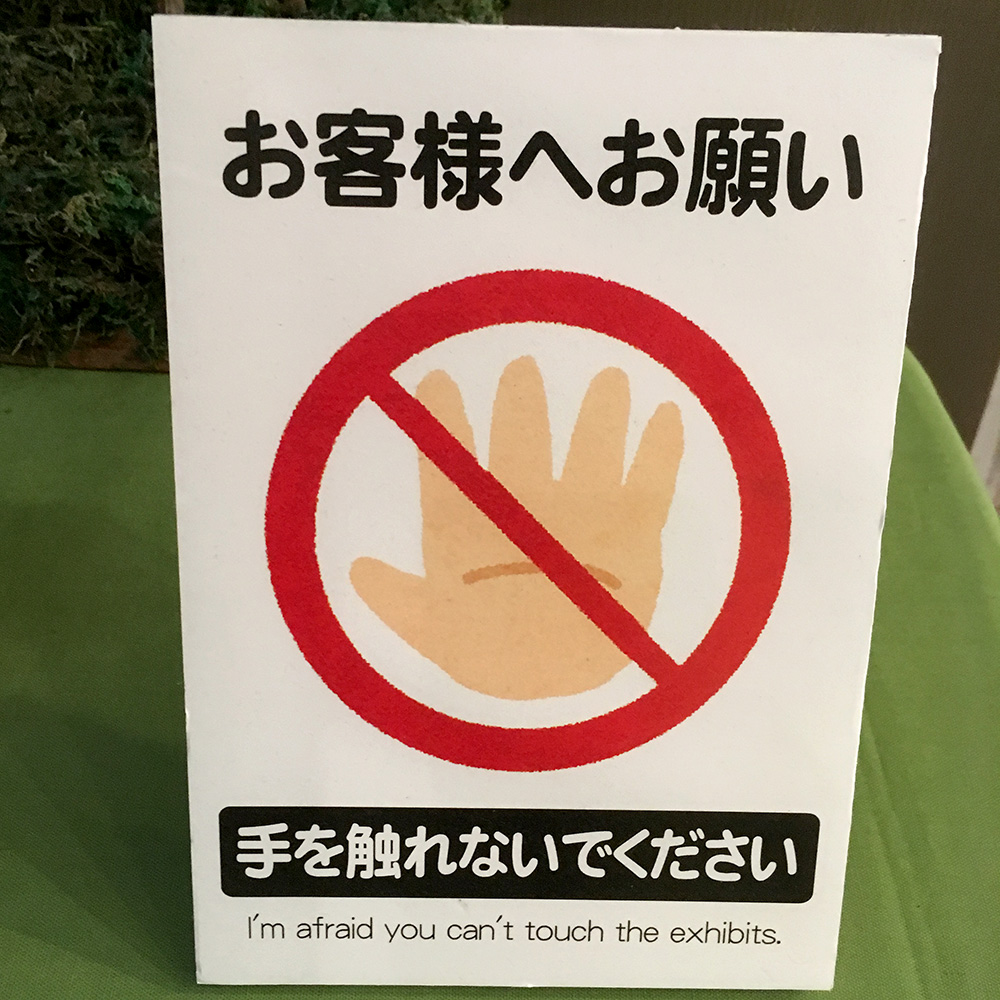Haley and Luke have Wednesday off and we're planning to take a ferry to visit one of the neighboring islands. As we plan for the trip we find out a one-way ferry ticket is ¥3000 per person, which means travel alone would cost us around ¥18000, not including the train ride, or other expenses. (~$160 USD)
Plan B is to explore Tottori: visit the pear museum and a nearby park that has a small zoo.
We drive eastward along the coast. Hills and mountains in the distance are visible for quick glances between valleys and wind-blocking fences that line the highway. The sun plays peekaboo through the cloud cover.
They've had several inches of snow here, just 12 miles away, and the parking lot is not shoveled. We carefully pick our way through the slush and ice to the sidewalk. It's lunchtime and right away we find a small all-you-can-eat buffet which is reasonably priced. The large Dippin' Dots sign that hangs over the entrance is funny to me, because of how many times the brand has come up in the last 42 hours.
The buffet feels fancy: small trays, great presentation. The sort of thing I'd expect to find at a pricey hotel or restaurant with a greek name. I try to sample a little bit of everything. We end our meal with regular, non-futuristic ice cream.

"Pear-shaped building in Kurayoshi Park Square." The Nashikko Museum brochure excitedly points out. "Welcome to Pear's Paradise. Let's physically experience the wonderful charms of 'pears.'" The building has as much resemblance to a pear as it does to an onion. Or an apple for that matter. It's round and the sides slope inward toward the top. I'd never guess it was pear-shaped on my own. It's not even green.
A glass sliding door lets us into the museum lobby and gift shop. The space is empty save for two employees and now us. A woman at the ticket booth gives us tickets and brochures. It costs ¥360 for the three of us to get in, that's about $1.20 USD per person. We appear to be the only visitors.
Another sliding glass door lets us into the main room of the museum. It's a large circular space two and a half stories tall. In the middle of the room a pear tree is suspended in a large glass case. It's set at a slight angle with the roots reaching nearly to the floor and the branches spreading outward several feet above "ground level."

The Japanese take great care of their pear tree orchards. The trees are pruned regularly and branches are bent and tied to create a canopy between the trees. This canopy is high enough to allow short tractors to move between the trees with ease, but is low enough to allow for easy access to the fruit.
Each pear is put in a small wax paper bag when it starts to form. This bag protects the pear from insects and needs to be changed to a large bag as the pear gets larger. It's a lot of work and probably one of the reasons fruit is so expensive in Japan.
A wide stairway leads up around the edge of the suspended tree. A display at the rear of the tree shows the soil composition starting at "ground level" for the tree, and moving down to a depth of 5 meters where the roots reach the deepest. The roots of the tree tend to spread out wide, mimicking the branches. The information with the soil informs us that Mount Daisen is actually a dormant volcano. Hmm. Good to know.
One of the first displays that catches our eyes shows us several dozen varieties of pears. Most the Japanese, Chinese, and Korean pears are round. They look like apples that were crossed with oranges, shape wise. Large and round, though some are quite small. It's only the European pears which have the round bottom and skinny top that I associate with "pear-shaped."

They have some very neat dioramas with figures made of wire and paper. They tell myths or legends associated with pears. I like to think of them as pear bedtime stories.

Some of the displays have models, a few are interactive and require you to push a button before lighting up or doing something cool. There's a small theater room that looks like the inside of a house. Wide wooden benches provide amble seating for the three of us and we cringe as the animatronic people twist and the one unnaturally brings his pipe to his mouth. As the sliding door behind them closes we can see the whole landscape sink down and go away. It must change out the physical sets for each season.

Upstairs is a children's interactive zone which doubles as a nightmare factory. Footprints on the floor lead through a tunnel under a tree. Motion sensors set off different noises. The giant earwig and mole help provide the scale: YOUR SMALL NOW AND THIS EARWIG IS THE SIZE OF YOUR DOG! IS NOT THIS FUN!?


There's one of those rocking toys found at playgrounds, only this one is a scary grub. Pears replicas half as tall as I am show rotting pears and grubs eating the insides. A giant crow sits in one of the huge plastic tree's only branches. When I step on a silver circle with blue footprints, it caws at me. The sound is so loud and unexpected I nearly have a heart attack.
If I was a child, I'd never eat a pear again.